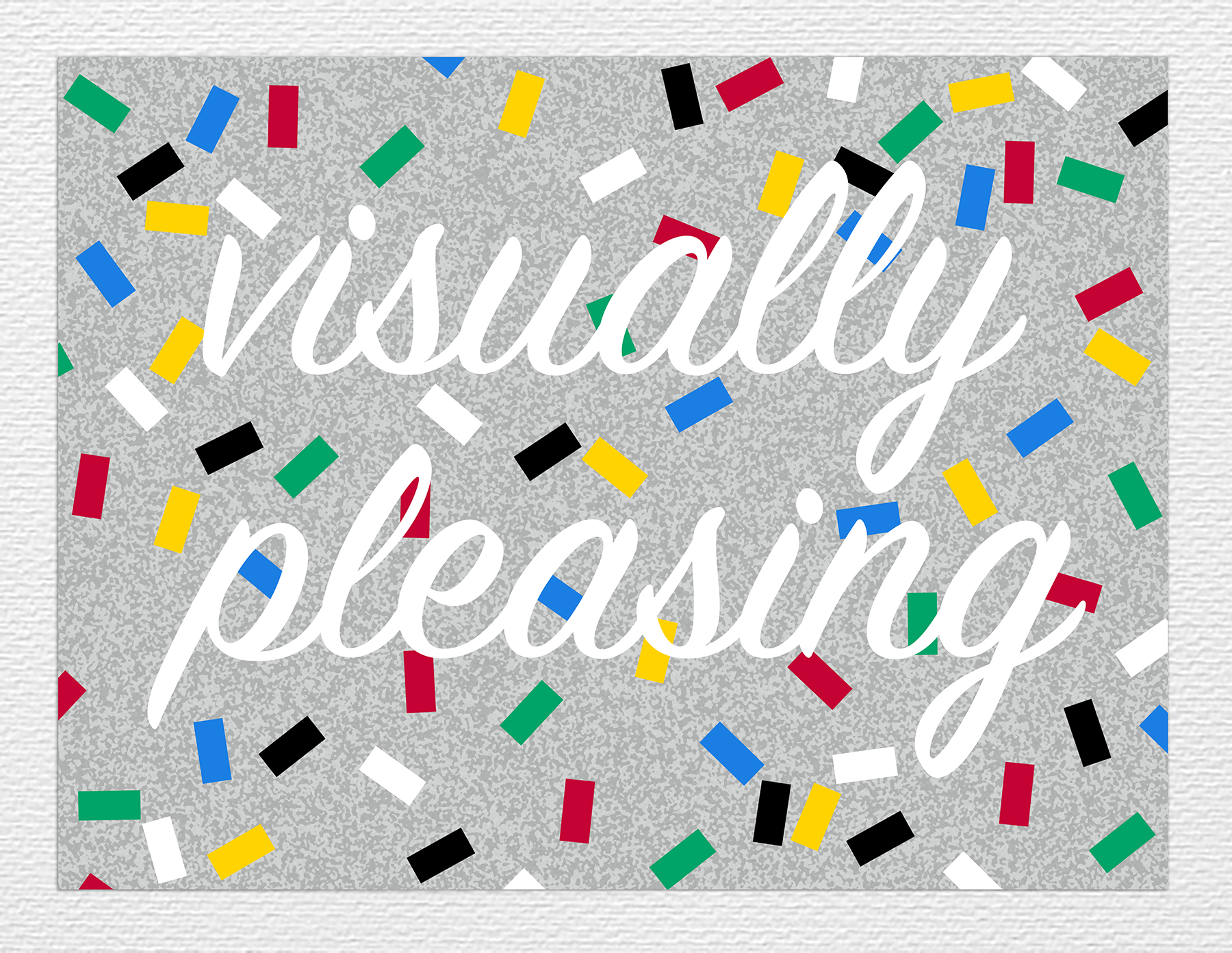Interview with Bethanie Irons
Bethanie Irons
Ball Return, 2018
Digital Painting on Paper
12 x 16 in.
Bethanie Irons is a painter and digital artist living and working in Columbia, Missouri. She earned her MFA from the University of Missouri and is currently pursuing a PhD in art education. She is the curator of PLEAT Gallery, an online gallery space. Interview is between Bethanie Irons and Ty Bishop.
Originally published in Volume 6.
TB: Your work for the past several years is made through a digital process. What drew you to work with this medium?
BI: My current digital process actually began out of necessity due to limited space. I had been used to working big because I had a large studio in graduate school. Once I graduated, though, the only space I had was my office at the school I taught at. During my office hours, I would play with compositions in Photoshop and it ended up being something I really enjoyed and looked forward to. It also brought me back to when I first enrolled in art school as a graphic design major. Of course, I had to relearn everything because that was 15 years ago, but I forgot how much I loved working on the computer. It is important to note that I grew up in the 80's and 90's on a farm. I didn’t have a cell phone or a computer until I was in my 20’s. I think there’s something really special about that. Technology can be a great thing but growing up without it made me appreciate the IRL spaces in a distinctive way.
TB: Do you see your digital process connected to the history of painting, or is it something new?
BI: This is such an interesting question. I teach art history and always stress to my students that there is an invisible thread that connects all forms of art in that every technique and concept reflects the time in which it is made. Renaissance art emerged out of an increased interest in science due, in part, to innovations in astronomy and exploration. Modernists felt that traditional art making practices were outdated, so innovation and experimentation became a primary concern to more accurately reflect a rapidly changing society. I see digital art and even today’s maker’s movement as being tied to those same threads. Digital artists embrace new technology and see the value in investigating this new materiality our culture is experiencing. The maker’s movement, to at least some degree, can be seen as a reaction to our culture’s obsession with technology, bringing art making practices back to hand/material contact.
TB: One element that stands out in your work is the multi-colored stripes. Why are these important?
BI: I have always been drawn to pattern and decoration. Although my work has taken many different directions over the years, that element has always been present. When I was in graduate school, a mentor introduced me to a book about stripes. This opened my eyes to the history of stripes as a tool for categorization and illusion. Stripes had been used in Medieval paintings to symbolically categorize someone who was deceptive or an outcast. Stripes as a formal element disrupt our normal reading of space and can be hard to look at when the repetition overwhelms our field of vision. That physical nature and the history of categorization and deception really appealed to me and what I was trying to negotiate formally and conceptually in my work. I have also researched how we view color and the subjective, illusory nature of it. I repeat 6 colors that are used in the opponent process theory of color vision. Essentially, this theory suggests that we view color through oppositional channels. For instance, when we look at a red square for an extended period and then look at a white wall, we will see a greenish afterimage. Although red and green are opposites, they work together in that one channel/color will compensate when the other becomes fatigued. In this way, color can be an illusion, a representation based on a multitude of factors that disrupt what is really there. Stripes paired with this color theory have provided me with a formal and conceptual base, pairing illusion with science, history with subjectivity. At the same time, the stripes in this specific color scheme have now become my brand. This relates to my interest in advertising and materialism.
Bethanie Irons
Bowling Alley, 2018
Digital Painting on Paper
12 x 16 in.
TB: How does the element of control relate to the items, places, and words you’ve included in your recent work?
BI: For about 3 years, I worked with raw canvas. I wanted the grid and organization of the canvas weave to show through. Also, the subtle color of canvas proved to be a needed relief between the brightly colored stripes. However, I was working with painter’s tape and I was trying to paint a hard edge on that textured surface, and it was a nightmare for me! It was an important challenge for me to face, though. I was wanting this very precise line when the weave of the support material was contradictory to that goal. So I had to reevaluate my process. While I believe the technical challenge was important for me to face, I also knew that my frustration with the technique was pushing me away from the act of creating. When I switched to working digitally, I felt a weight had lifted. While I certainly felt and still feel challenged by working with my hands through a trackpad, there is an element of control in this technique. You can choose very specific colors, lines can be crisp, elements can be uniform. I realized that this feeling of control in the process of making was relevant to my concept. I could create a place or an object that was in a perfect, controlled state, which reflected what I held as important in my day to day life. I am highly affected by my surroundings and the order or disorder of it and I believe the environments we live in, the objects we live with, the state of our private spaces says a lot about who we are. These controlled spaces, both physical and digital and in the process and the product, relay my truth but also inspires me to question what I value and how I navigate not only physical structures, but social ones as well.
TB: It’s interesting to me the way that the phrases, objects, and places, seem to speak to each other. An easy connection for me is Shopping Bag with Business Casual. Do you intentionally create these connections?
B: With my work, I never see one piece as being isolated from another. They feed off each other and are informed by one another. I have always been interested in how groups of objects contribute to more layered, nuanced meaning. An image of a shopping bag on its own can have agency, but when shown next to a work that talks about standards and categories, it becomes much more poignant. I suppose this is one of the many reasons why I love going to art museums and galleries. The spaces, both physical and psychological, that objects occupy together can and should enhance and challenge meaning. Interpretation becomes a game of sorts. How does this connect to that? What does it say on its own and how is that meaning changed when something else enters into the equation? I love that aspect of art, art making, and curation.
TB: You completed an MFA at the University of Missouri where you are now teaching and pursuing a PhD in art education. You must be incredibly busy. Does your teaching speak to your studio practice in any way?
BI: I have been teaching art for about 7 years now and it has echoed and enhanced my studio practice in so many ways. Teaching, like art practice, requires constant dedication. Both teaching and art making require flexibility and being open to learning from others. For me, being a teacher and a working artist go hand in hand. They both balance and inform each other. I have learned so much from teaching art history and that goes back in to my work. Although I am not an art historian, my studio art practice enhances my teaching and provides students with a different perspective of history. I really can’t imagine doing one and not the other.
TB: You’ve also founded an online gallery called PLEAT. Can you tell me about the gallery and why you started it?
Bethanie Irons
Visually Pleasing, 2018
Digital Painting on Paper
12 x 16 in.
BI: I started PLEAT shortly after I completed my MFA. I had always been interested in museum studies and, while I wasn’t able to start a physical gallery, I realized that there was potential in the online space for what I was wanting to pursue. I was also teaching studio art when I started PLEAT and I incorporated the process into my teaching. I found that it was a great way to give my students experience in curation and it gave them the opportunity to deeply investigate meaning through artist statements and how artists present their work. The gallery is truly a labor of love for me and a great educational tool for students. I am also able to (virtually) meet and learn about artists from all over the world and be a part of a community of artists that inspire and challenge me.
TB: What are your thoughts on Instagram for art? Do you think it’s an effective tool for artists and to see art?
BI: I love Instagram! In fact, I am focusing my dissertation research on Instagram as a tool for artistic thinking and reflection. I think it is an excellent tool to see art and to connect with others. I grew up in South Dakota and Wyoming and now I live in Missouri and, while there are some fabulous art communities in the Midwest, it is always great to see what is happening on the coasts and throughout the world. Seeing a diversity of art and artists broadens our scope of possibilities. Our own collections of images on Instagram is essentially an alternate form of the portfolio. Artists can not only post completed and in-progress works, but can also repost the work of other artists who inspire them. Many artists that I follow will post snapshots from daily life as well. All these aspects contribute to our understanding of context and personal and social meaning. While nothing can replace the physical presence of artwork, I think it is a great alternative and one that should be embraced.



